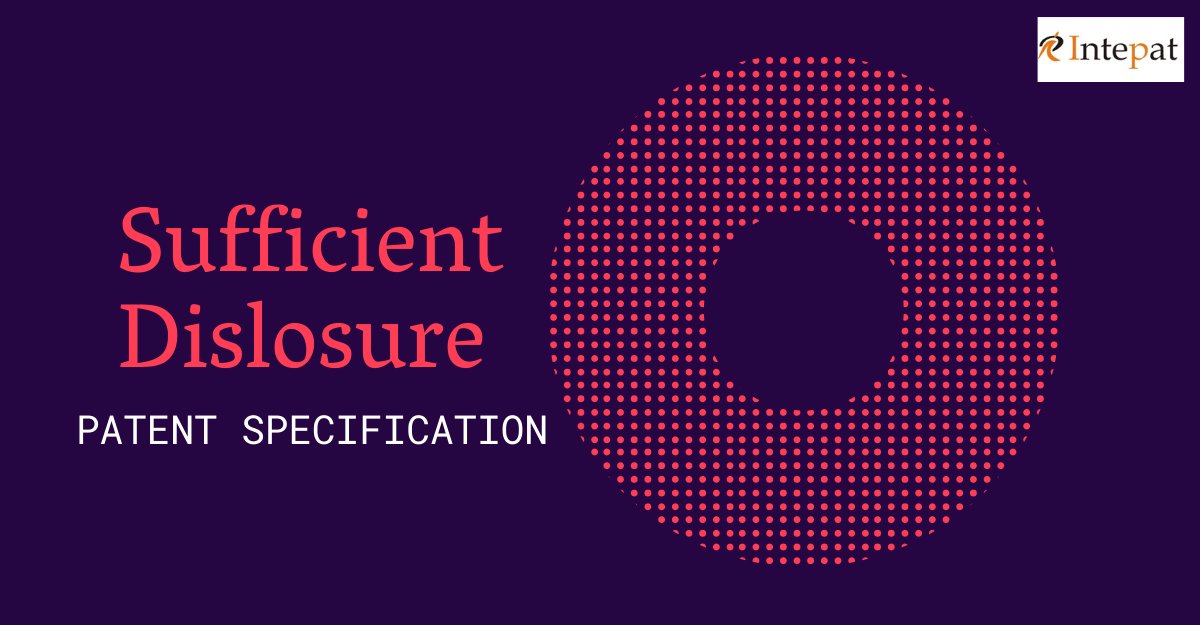A patent grants monopoly rights to the applicant in return for making the invention public, where it will be beneficial to society at large. For an invention to be patentable, it must meet the criteria of novelty, inventive step, and industrial applicability. The patent office requires the applicant to disclose technical information concerning these three aspects in the patent specification while applying for a patent. The term “sufficiency of disclosure” means that the information provided in the patent specification should be adequate for an average skilled person in that field to perform the invention. The specific requirements of sufficient disclosure vary slightly from one jurisdiction to another.
Indian Patent Law
A patent application can either contain a provisional specification or a complete specification based on the information that the applicant about the invention. Usually, provisional specification is selected when the inventor does not have adequate information about the invention and needs more time to come up with more experimental data. The Indian Patents Act, 1970 (the Act), is silent concerning sufficient disclosure in a provisional specification. Generally, the Indian Patent Office (IPO) provides a duration of 12 months from the date of filing the provisional specification to submit a complete specification. The best method of performing the invention known to the inventor at the time of filing may be included. However, this best method can be changed within the 12 month period. Usually, provisional specifications are filed for the purpose of blocking an earlier priority date.
In the case of a complete specification, a combined reading of Section 10 of the Act with Rule 13 of the Patent Rules, 2003 provides the various requirements to be met in terms of sufficient disclosure. Section 10 (4) of the Act states –
“Every complete specification shall-
1. fully and particularly describe the invention and its operation or use and the method by which it is to be performed;
2. disclose the best method of performing the invention which is known to the applicant and for which he is entitled to claim protection; and
3. end with a claim or claims defining the scope of the invention for which protection is claimed;
4. be accompanied by an abstract to provide technical information on the invention..”
It should contain a detailed description of the invention, along with the best method of performance known to the inventor. The information disclosed should enable a Person Skilled in the Art (PSA) to perform the invention. Rule 13(7) requires that the abstract of the specification should begin with the invention’s title and should indicate the technical field to which it belongs.
Position of the USPTO
35 USC 112 describes the requirement of sufficient disclosure. The specification should contain the best method of performance and should have information that is sufficient for a PSA to perform it “without undue experimentation.” This term is determined based on eight factors – the number of experiments necessary, amount of guidance presented, presence or absence of working examples, nature of the invention, state of the prior art, the relative skill of those in the art, predictability or unpredictability in the relevant field, and breadth of the claims. The best mode refers to the best method known to the inventor at the time of filing. The applicant must provide a “written description” to prove that the inventor had invented at the time of filing and was not filing an application based on speculation.
Position of the European Patent Office
Article 83 of the European Patent Convention states that “the European patent application must disclose the invention in a manner sufficiently clear and complete for it to be carried out by a person skilled in the art.” Article 100 (b) provides for filing an opposition on the grounds of insufficient disclosure.
Consequences of Insufficient Disclosure
After a complete specification has been filed with the IPO, it is impossible to include new or additional information. Only specific small typographical errors or amendments (within the scope of original disclosure) may be corrected after filing by making a request to the IPO under Form 13 and paying the prescribed fees. Therefore, it is pertinent to include all the required information in the complete specification at the time of filing itself. If the information disclosed in the patent specification is insufficient, the Patent Examiner/Controller of the IPO can either object to or reject the grant of the patent.
Insufficient disclosures act as a ground for both pre-grant and post-grant opposition. Section 25(1)(g) and Section 25(2)(g) deal with pre-grant and post-grant opposition, respectively, wherein the complete specification needs to disclose the invention and the best method clearly.
Insufficient disclosure allows any third party at a later date to seek the revocation of the patent under various grounds mentioned in Section 64(1). Section 64(1)(h) deals with the requirement of providing a detailed description of the invention along with the best method so as to enable a PSA in India to perform the invention. Section 64 (1)(i) deals with sufficiency of the scope of claims made and that claims made should be based on the information disclosed in the specification.
The patent application may face similar consequences in other jurisdictions, such as the USPTO and EPO.
Therefore, it is recommended that the applicant seeks the expertise of a patent attorney skilled in that particular field to draft the complete specification and fulfill the requirements of sufficiency of disclosure.




